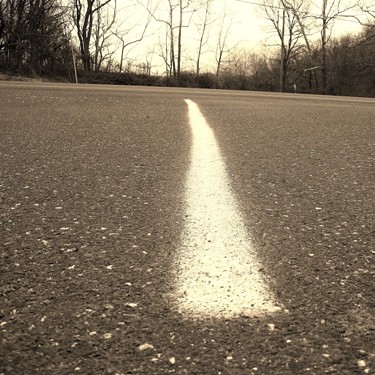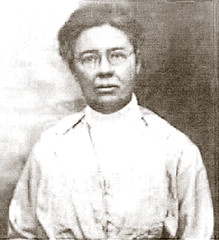
The story of this simple innovation may surprise you.
A Milestone Monday Feature:
Who besides myself has ever wondered "who was the 'guy' who invented pavement markings?" Without them modern highways could not function so their origin must have been forged by necessity. Some historians like to point to Roman street crossing stones as the forerunner of modern 'zebra walks' and that is certainly good history but the actual sorting of traffic by lanes requires a visit to more recent times.
As the automobile came into common use in the United States, the U.S. Numbered Highway System came into being and the various states embarked on a mission to pave cross-country highways. In their gravel and dirt condition the danger of head-on collisions was not so life threatening as the speeds were not that great. As the great highways became paved, however, the speed of vehicles increased to the point that dangerous collisions did occur. U.S. 99 in Indio, California was a particularly dangerous stretch of road and in 1917 necessity would soon become the 'mother of invention.'
Dr. June Hill Robertson McCarroll was born in New York's Adirondack Mountains and went on to study medicine in Chicago during an era when few women completed professional studies at all. When her first husband John Robertson developed tuberculosis, she moved with him to Southern California hoping the desert climate would help his recovery. She took a job as a nurse with the Southern Pacific Railroad. Mr. Robertson died in 1914 and Dr. June later married Frank McCarroll, the local station master. She continued in her medical practice and at one time was the only physician serving the desert area between Palm Springs and the Salton Sea. She began to see victims of automobile accidents on an increasingly regular basis.
Driving in her model T Ford, along what was to become U.S. 99 in Indio, the good doctor was run off the road by a large truck roaring toward her in the center of the pavement. In her own words: "My Model T Ford and I found ourselves face to face with a truck on the paved highway. It did not take me long to choose between a sandy berth [sic] to the right and a ten-ton truck to the left! Then I had my idea of a white line painted down the center of the highways of the country as a safety measure."
Dr. McCarroll approached the Riverside County Supervisors and the Chamber of Commerce who listened politely to her idea and politely shelved it. Frustrated, but far from defeated, she finally engaged in a bit of guerrilla road improvement, hand painting a four-inch white line down the center of a mile-long stretch of U.S. 99 to create two distinct lanes. Aided by the Indio Women's Club, she began a statewide letter writing campaign and finally, in 1924 the state highway commission adopted her proposal. Initially 3500 miles of road were striped at a cost of $163,000. Soon pavement markings were in use around the world.

Dr. June Hill Robertson McCarroll




No comments:
Post a Comment